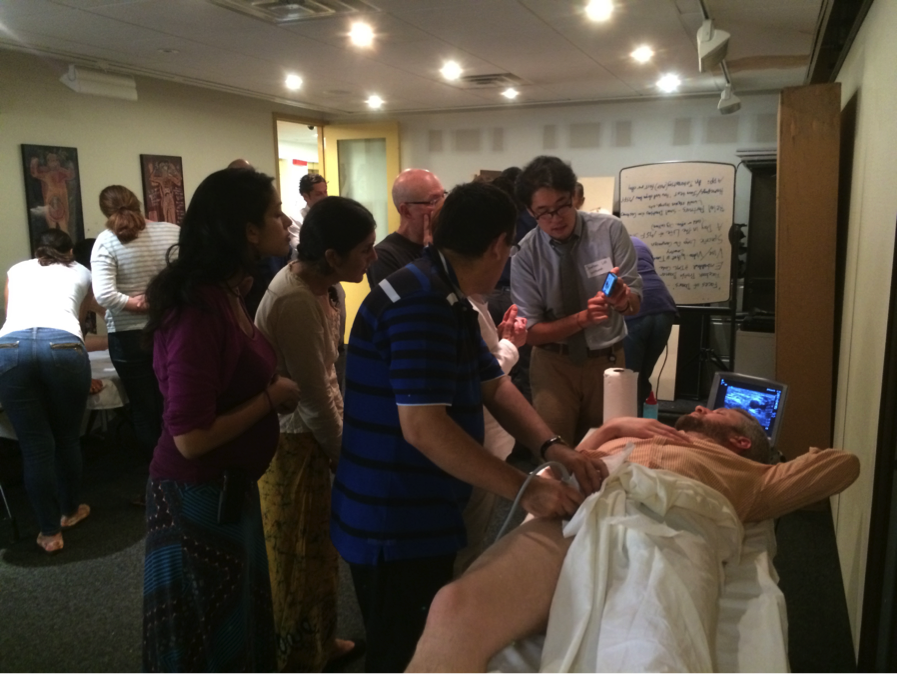Shaping the future: Our strategy for research and innovation in humanitarian response.

Shaping the future: Our strategy for research and innovation in humanitarian response.


Due to the effects of population growth and increasing urbanization, earthquakes now account for the largest burden of injury among all geophysical disasters, claiming an average of 27,000 lives each year and leaving hundreds of thousands more with serious injuries and long-term disability. (1) Yet despite these trends, and despite increasing calls for an evidence-based approach to disaster management, precious little research has been conducted in the acute phase of a major earthquake.(2) In fact, no prior randomized controlled trials, the gold standard in medical research, have been conducted to evaluate the comparative efficacy of different management strategies for patients with traumatic injuries in the aftermath of a major earthquake.
There are three primary reasons for this major deficiency in the disaster evidence-base: funding, logistics, and ethics.
Until recently, most global health research funding agencies focused their portfolio on communicable diseases, such as HIV, TB, and malaria, with little money set aside for trauma or disaster research in low- and middle-income countries.
In addition, conducting research in the acute phase of a natural disaster such as an earthquake represents a major logistical challenge. Even after receiving grant funding, researchers typically spend months developing their protocols, hiring and training staff, and building their data management system. Acute care research in the aftermath of a major earthquake, however, must be launched within days in order to accomplish its aims.
Finally, there is the difficulty in obtaining pre-approval for research from a local ethics committee in the country where the research will be conducted when neither the location nor the timing of the disaster are known in advance.
The Regional Anesthesia for Painful Injuries after Disaster (RAPID) study, developed in collaboration between researchers at Epicentre, Médecins Sans Frontières (MSF), and Brown University, seeks to be the first to overcome these barriers and conduct a randomized controlled trial in the aftermath of a major earthquake. Epidemiologic studies from multiple settings consistently show that trauma sustained during earthquakes predominantly affects the lower limbs. (3-4) Regional anesthesia, which involves injecting a small amount of local anesthetic near the femoral nerve in the upper thigh, has already been shown to be effective at reducing pain for patients with hip fractures in high-resource settings.(5) Whether it can also reduce pain for patients with lower limb crush injuries remains unknown, as these types of injuries are uncommon outside of an earthquake setting. Additionally, it is unclear whether ultrasound guidance can improve the efficacy and safety of regional anesthesia in a disaster setting.(6)
To answer these questions, the RAPID study will enroll a cohort of patients presenting to an MSF field hospital with lower limb injuries in the aftermath of a major earthquake and randomize them to one of three treatments: standard care with narcotic pain medication; standard care plus regional anesthesia; or standard care plus ultrasound-guided regional anesthesia. We will then measure the self-reported pain of patients over time to determine whether regional anesthesia can safely and effectively reduce pain in earthquake victims with lower limb injuries.
As we await the appropriate trigger criteria for the launch of the RAPID study (i.e. a major earthquake in a resource-limited setting to which MSF deploys a field response), our team has already worked to overcome the significant barriers noted above.
First, we have obtained advanced funding for our project through Elrha’s Research for Health in Humanitarian Crises (R2HC) Rapid Response Grant, which covers initial start up costs for the research, followed by the release of the remaining funds in the immediate aftermath of a major earthquake. The first of its kind, the R2HC Rapid Response Grant is an important resource for humanitarian and academic research teams wishing to conduct studies in the acute phase of a humanitarian crisis. Second, we have overcome many of the logistical barriers noted above by preparing our study protocols and data collection tools in advance; harmonizing all of our study medications and equipment with those already present in an MSF trauma field hospital; and training a large team of research staff members who can be quickly deployed after an earthquake to carry out the research.
Finally, we obtained pre-approval from the MSF Ethics Review Board for our study. In the event of an earthquake, we will attempt to identify a local ethics committee or governmental health authority within 72 hours and provide them with the opportunity to review our study protocols and prior ethical approval and make any changes they deem necessary.
Conducting high-quality health research in the acute phase of a major disaster presents extraordinary challenges. Through a combination of targeted research funding, strong academic and humanitarian partnerships, and a good deal of advanced planning, however, we believe that these challenges can be overcome. Indeed, we owe it to the millions of people affected by disaster each year to find a way to ensure that they have access evidence-based therapies that have been proven effective for the types of injuries and conditions they are most likely to experience.

 Please upgrade your browser
Please upgrade your browser
You are seeing this because you are using a browser that is not supported. The Elrha website is built using modern technology and standards. We recommend upgrading your browser with one of the following to properly view our website:
Windows MacPlease note that this is not an exhaustive list of browsers. We also do not intend to recommend a particular manufacturer's browser over another's; only to suggest upgrading to a browser version that is compliant with current standards to give you the best and most secure browsing experience.